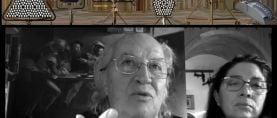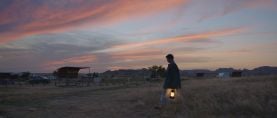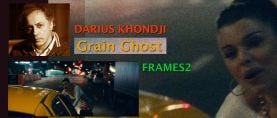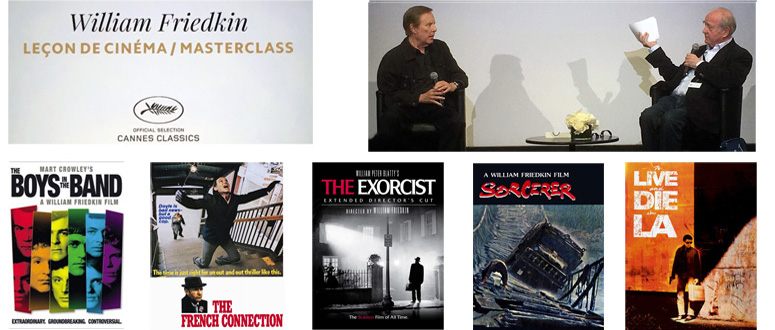
Cannes 2016: William Friedkin’s 8 Cinema Lessons
The director gave a fascinating Master Class, or “Cinema Lesson” in French, hosted by Michel Ciment, as part of the Cannes Classics program of the 2016 Cannes International Film Festival.
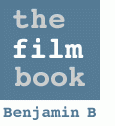
The director gave a fascinating Master Class, or "Cinema Lesson" in French, hosted by Michel Ciment, as part of the Cannes Classics program of the 2016 Cannes International Film Festival.
William Friedkin is a masterful and innovative director who re-invented the crime film genre in 1971 with The French Connection, and the horror genre with The Exorcist in 1973, in collaboration with cinematographer Owen Roizman, ASC.
The 80-year-old director was in superb form during the Master Class in Cannes, looking a good 10 years younger, and regaling us with wit and wisdom as he eloquently discussed some of his masterworks. He also revealed for the first time that he had filmed an actual exorcism, just three weeks before the Master Class.
The Master Class was masterfully moderated by the eminent auhor and film critic Michel Ciment. Michel is also the editor-in-chief of Positif, the leading French film magazine.

William Friedkin
Friedkin's feature film credits also include The Birthday Party, The Boys in the Band, Sorcerer, Cruising, To Live and Die in LA, Jade, Bug and, in 2013, Killer Joe.
Friedkin directed his first feature at the age of 32, and helmed his last at 78. Friedkin won the Best Director Oscar at the age of 36 for The French Connection. The film won a total of five Academy Awards, including Best Picture, with its ground-breaking gritty aesthetic. The Exorcist was a worldwide critical and box office success, with 10 Oscar nominations for the scary supernatural tale. The director considers Sorcerer his best work. In 2007, his film Bug won the critic's Fripesci prize in Cannes.
Friedkin has been married four times, starting with French actress Jeanne Moreau, and is currently wed to Sherry Lansing, the first woman to lead a major Hollywood studio, Paramount.
8 Lessons and an Exorcism
I have singled out 8 cinema "lessons" I gleaned from the lengthy Master Class, and have taken the liberty of "editing" (re-ordering and grouping) some of Friedkin's comments thematically below; I have added occasional comments in italics.
I conclude with some of Friedkin's striking personal views on the reality of exorcism, and his very recent experience shooting one.
You can view a video of the entire 84-minute Master Class in its original order by following the link below.
+++
1. The Best Idea Works
Friedkin directed The Birthday Party, with a screenplay adapted by Harold Pinter from his play, and learned dramatic story-telling from the great playwright.
The one thing that I learned from Pinter was that the best idea works. He would often take suggestions, not only from me — and believe me I wasn’t in his class — but he would take suggestions from the actors, and sometimes change the language on the theory that the best idea works.
2. Working with Actors
Friedkin has directed five actors in Oscar-nominated performances: Linda Blair, Ellen Bursty, Gene Hackman, Roy Scheider, and Jason Miller. Hackman won an Oscar for The French Connection.
My idea of casting begins with the intelligence of the actor or the actress, that’s the first thing I’m interested in. Assuming they’re right for this or that role, I want to be sure that they understand the story and the characters at least as well as I do.
As a director what I try to do is watch the actors and learn what their strengths are — and maybe their weaknesses — and I try to photograph the film and edit it to their strengths.
I’ve worked differently with different actors. In The French Connection, Gene Hackman wanted that role, but he did not want to play that bigot... a guy who is constantly harassing black people and using the N word. He didn’t want to do that, and I had to provoke his anger to get him to do that. I don’t think I’ve worked that way with anyone else. I would get him so angry sometimes that he wanted to kill me. I used that anger and provoked it.
Unless you’ve worked with the same actor five, six times, you’re constantly being surprised what your cast can do, what they can give you, and going back to Harold Pinter, the best idea works. Often that comes from the actor.
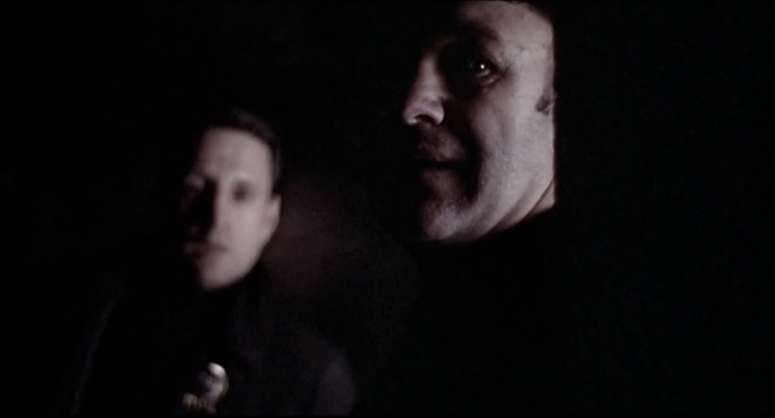
3. Shoot One Take
I will rarely do more than one take; when I started like every other dumb first-time director, I would hope for a miracle about take 17, and when I got into the editing room I found that it was usually the first printed take that seemed the most real, was the most spontaneous.
So I believe in spontaneity very much and I will often ask actors that I trust to forget the lines... and just do it. And I know that when I say that, they will do the lines word perfect, but they do them in a spontaneous manner. That’s what I’m looking for.
Every shot in The Boys in the Band is completely blocked out. [It was shot by] a great veteran New York cinematographer, Arthur Ornitz [ASC]. In those days, I would draw every camera move, so the spontaneity that I was hoping for had to come totally from the performers. I don’t do that anymore, I don’t draw the camera shots, I allow the film to breathe like a good wine, at least I hope to do that. I take my inspiration from the moment, from each moment...
4. Make a Film Three Times
A film is made at least three times, it’s made in the script stage, it’s made when you photograph the film and it’s made once again in the editing room. I consider the editing room a place where the film is breathed into life. To me the footage that I shot is just raw material for the editing room. That’s as blunt a way as I can put it.
5. Use Documentary
One of the major inspirations to me for The French Connection, was the Costa-Gavras film Z. I think that Costa-Gavras achieved that, he made a film that felt like a documentary. It felt like the audience was experiencing everything at the moment, in the moment and that gave me the courage to do The French Connection that way. I’ve said this to Costa already; he knows the debt that I owe to him and to his cinema. It was also done to some extent earlier by Jules Dassin, in The Naked City, and in some of the films he made in New York and Hollywood before he was blacklisted.
I felt that I could take what I had learned from making documentary films and impose it on to a story, which had not been done to a great extent... The actual case took 10 months and the film runs 100 minutes, but it’s an impression of the French Connection case. It’s not a documentary: it’s an impression of who those people were, and how they interacted with one another.
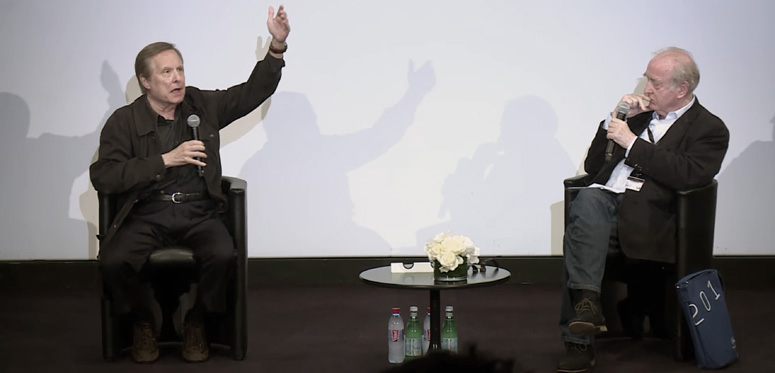
6. Beware the Little Mouse
Inside every one of us who has ever created anything there is almost a constant record of failure, that’s what we think of, that’s what involves our thought process. I know some of the most successful filmmakers and songwriters and inside these giant talents is a little mouse. And that is, I guess, the problem of the creative artist.
7. Trust Your Instinct
Owen Roizman was the director of photography of The French Connection, it was his first feature film. He was a very young man. I met him and I liked him. I had never seen anything that Owen had lit or shot, he’d done a lot of commercials, but I never saw them. I just always go on instinct, I trust my instinct, and often I’ve been wrong. I still trust my instinct no matter what.
You know, when you’re directing, everything is feeling, instinct. There is a voice that speaks to you when you write, direct something, paint something, you’re kind of under a spell and things sort of come into your world.
8. Value Your Focus-Puller
To me the most important job on a film crew is the focus puller, the man who controls the focus of the lens. I don’t care how good the acting is, or the cinematography, the lighting or the direction or anything else, if it’s out of focus it’s ruined. And that’s why focus pullers are so important to the making of a film. I don’t care if it’s Stanley Kubrick or whoever the hell else it is, if it’s not in focus the audience will not enjoy it.
+++

Shooting an Exorcism in 2016
Friedkin told the Master Class audience that, after researching the case that The Exorcist was based on, he arrived at the conclusion that the film was about something real. He also revealed for the first time that he had recently shot an exorcism, a few weeks before the Master Class. Friedkin described himself as an agnostic, and did not offer a supernatural explanation for exorcism.
I did a lot of research into this case, which was in 1949, and I’m convinced that it’s authentic... I’m convinced that there was no other explanation. Everything having to do with medical science and psychiatry was attempted, and this young man suffered from afflictions very similar to the film, hard as that is to believe.
So when I started to make this film, I thought I was making a horror film and then... I knew that it was not a horror film. This was a case of exorcism.
I must tell you that recently I filmed an actual exorcism... on May the first of this year. I have not said this publicly yet, I was invited by the Vatican exorcist to actually shoot on video an actual exorcism, which I had never seen... and which few people have ever seen, and which nobody has ever photographed. I’m not talking about some cult, I’m talking about an exorcism by the Catholic Church in Rome and it’s remarkable how close it is to my film. I was pretty astonished by that and I don’t think I’ll ever be the same having seen this. Quite an astonishing experience.
I’m not Catholic... I don’t belong to a church or synagogue. I do believe in the teachings of Jesus. I believe they are quite prophetically profound and beautiful... About the supernatural aspect of it, that is left to each person’s consciousness and belief system... My own philosophy is best stated by Hamlet when he says to his friend Horatio: “There are more things in heaven and earth, Horatio, than are dreamt of in your philosophy”. And that is the belief system that carries me along. There are just more things than I could ever possibly understand.
+++
+++
LINKS
imdb.com William Friedkin
wikipedia.org: William Friedkin
wikipedia.org: Michel Ciment
wikipedia.org: Positif magazine
festival-cannes.com: video of William Friedkin Master Class (84 minutes)
festival-cannes.com: Festival de Cannes
wikipedia.org: Harold Pinter
wikipedia.org: The Boys in the Band
wikipedia.org: The French Connection
wikipedia.org: The Naked City by Jules Dassin (1949)
wikipedia.org: Z by Costa-Gavras (1969)
wikipedia.org: The Exorcist
theasc.com: Demonic Convergence by David E. Williams
- from American Cinematographer August 1998 issue
imdb.com: Arthur Ornitz, ASC
wikipedia.org: Owen Roizman, ASC
washingtonpost.com: Exorcist director William Friedkin Says Vatican Invited Him to Document the Real Thing
+++

